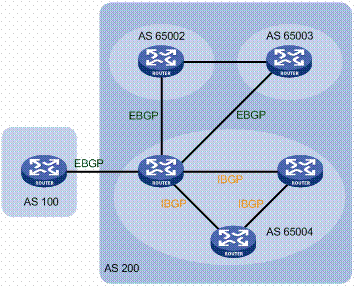BGP is the de facto inter-domain routing protocol to ensure global connectivity of the Internet. However, various reasons, such as deliberate attacks or misconfigurations, could cause BGP routing anomalies. Traditional methods for BGP routing anomaly detection require significant manual investigation of routes by network operators. Although machine learning has been applied to automate the process, prior arts typically impose significant training overhead (such as large-scale data labeling and feature crafting), and only produce uninterpretable results. To address these limitations, this paper presents a routing anomaly detection system centering around a novel network representation learning model named BEAM. The core design of BEAM is to accurately learn the unique properties (defined as \emph{routing role}) of each Autonomous System (AS) in the Internet by incorporating BGP semantics. As a result, routing anomaly detection, given BEAM, is reduced to a matter of discovering unexpected routing role churns upon observing new route announcements. We implement a prototype of our routing anomaly detection system and extensively evaluate its performance. The experimental results, based on 18 real-world RouteViews datasets containing over 11 billion route announcement records, demonstrate that our system can detect all previously-confirmed routing anomalies, while only introducing at most five false alarms every 180 million route announcements. We also deploy our system at a large ISP to perform real-world detection for one month. During the course of deployment, our system detects 497 true anomalies in the wild with an average of only 1.65 false alarms per day.
翻译:暂无翻译




